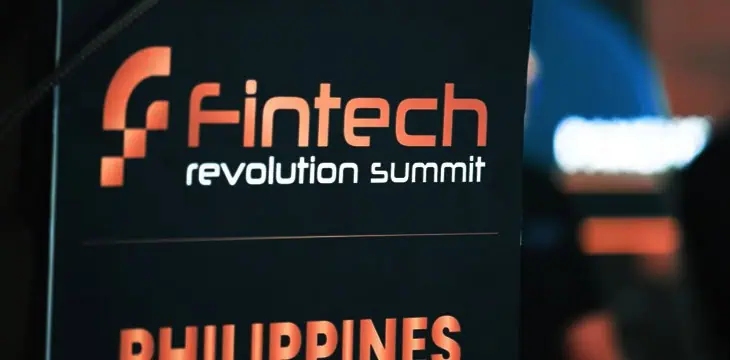|
Getting your Trinity Audio player ready...
|
What are you building, and how do you expect to achieve success? Those were the main topics in the latest themed webinar from the Bitcoin Association. This time, the focus was on the Asia-Pacific (APAC) region and some projects that sometimes don’t get much airtime outside their local markets.
Host Ella Qiang, manager of the Bitcoin Association’s Southeast Asia region, hosted the online event. Joining her were Lise Li, the Bitcoin Association manager for China, ShowPay’s Sunny Fung, Gu Lu of Satoplay, Lin Zheming of Mempool and DotWallet, and BitPing’s Dean Little. The group also invited Aaron Russell (better known as “Libs”) in the U.K. to talk about his products and give a demonstration of his latest offering, Bitpost.
Theme: ‘Unlocking value in the digital economy’
Holding themed webinars was a good chance to take a deep dive into the technology and specific issues affecting projects, Qiang said. By sharing their ideas they could hopefully learn from others’ experiences and perhaps find some new inspiration.
Bitcoin has always faced a kind of chicken/egg problem: services can be successful and profitable when there are millions of people using Bitcoin, but to gain those millions of users, there must be successful and popular services. Those building on Bitcoin must juggle and balance these two issues, which may also counter each other out.
So how are these companies, which offer a variety of different services, dealing with the challenge?
Dean Little said the problem with today’s Internet is its inability to capture things that are worth less than a dollar in (monetary) value, but which do have that value.
The group agreed that acquiring and onboarding new users was a challenge for Bitcoin developers. While wallets like Money Button, DotWallet and RelayX can provide easy account creation and logins, new users must first sign up for those services and (most of the time) acquire some BSV before using anything else. That stepped process asks a lot from those unfamiliar with Bitcoin.
“We haven’t fully unleashed Bitcoin’s potential yet,” said Sunny Fung. Lin Zheming said there was still a need to educate people about Bitcoin, about privacy and their rights and to create services with features only possible on Bitcoin. Zheming added that developers shouldn’t rely on attracting every user on the Internet, and noted that companies would need to experiment with pay-as-you-go and regular subscription models before deciding which worked better.
“There’s kind of two economies,” said Little, noting that he doesn’t see a huge problem if there’s a gap between the Bitcoin and fiat currency worlds. The fiat economy could work as an “export market” for Bitcoin, with users moving between both.
Little and Gu Lu agreed with Zheming that offering novel and compelling features was really the best way to attract new users. Bitcoin gives developers the chance to serve up something that’s better than existing products on the market; small payments tied to incentives and referrals are one model these companies are deploying to build their user bases.
Other topics discussed included how social media and publishing platforms deal with the issue of what’s allowed in different jurisdictions; whether “nanopayments” could create new business models, and how each company would define “success” in their chosen area.
There will be many more webinars like this one, and CoinGeek will also be working on news projects that highlight what’s happening in the APAC region.
Introduction to a selection of APAC Bitcoin projects
Each participant also gave an introduction and rundown for their project. Lise Li said the Bitcoin Association was holding another educational event in Shenzhen and has been traveling around the country to various meetings.
Gu Lu’s Satoplay is a gaming platform that utilizes micropayments, storing players’ score records on-chain using MAPI to broadcast its transactions. It has 30,000 registered users, 10,000 of whom have engraved their game data on-chain using BSV transactions. It also offers a rewards system to those who keep these records, from a few satoshis to larger payouts.
Payments platform ShowPay is working on MetaID, “the first sub-protocol for a decentralized ID system,” according to Sunny Fung. Other services can branch out from MetaID, and the company has created some conceptual services like ShowBuzz (like Twitter), the ShowTalk chat app, and the ShowApp social media network. Alongside this are some very-real apps named ShowMoney and ShowMan.
Lin Zheming gave an update on some of DotWallet’s new features, which include a native mobile app called DotWallet Pro with more advanced features, Paymail support, and their “Bitcoin as a service” platform that allowed developers inexperienced with Bitcoin to integrate their apps into the BSV ecosystem more easily.
Dean Little presented a preview of some of BitPing’s upcoming improvements, including fiat currency acceptance and a DNS propagation feature. BitPing, a previous Bitcoin Association Hackathon winner, has nodes in over 70 countries and “is already making money,” Little said. The service is built for developers who want to monitor their site’s performance, and check security by determining whether a site was under attack. It’s also about to launch referrals with commissions for those who help onboard new users.
U.K. guest Aaron Russell gave a presentation of Bitpost, a content creation and curation platform designed for ease-of-use and simple onboarding. This is the best way to attract users from outside the Bitcoin world, he noted.
Bitpost grew out of Russell’s previous experiment, BitPaste. It’s a more fully-featured content platform that allows users to write and post articles (Medium-style). Using Bitcoin-specific features it lets them set paywalls for their content, choose to encrypt or publish in plain text, and upload to the blockchain or off-chain.
It’s not necessary to create an account to use Bitpost, but doing so enables more features. It creates a “pseudo wallet” that connects content to its uploader and allows them to earn money from views—using, Russell said, a Metanet-like graph structure. Bitpost has a simple drag-and-drop, Markdown editor that keeps records of revisions that’s simple to understand and use. The content creation part is up and running now, though the next challenge is working out the “mechanics” of creator/curator arrangements; allowing those with a talent for attracting audiences to collaborate with skilled creators in a way that brings benefits to both.
“Do we think Bitcoin can disrupt things? That’s why we’re here,” Russell said.
Why you should pay attention to Asia/APAC
Asia’s advantages are its large population, one that also tends to embrace new technology and financial services more readily than others. Another is its large pool of development talent. While some outside the region see Asia’s (particularly China’s) laws as fairly strict, there’s also a lot of room to experiment and innovate; to push boundaries before they’re defined clearly. While not always a clear advantage, it can offer some leeway.
There are certainly many interesting things happening for Bitcoin in the Asia/APAC region. Watch that space by watching this space for more updates and ideas, many of which could be surprising and unexpected.
See also: Jeff Chen’s CoinGeek Live presentation on New Browsers & Domain Systems for a Bitcoin SV-Powered Internet.

 07-12-2025
07-12-2025 





